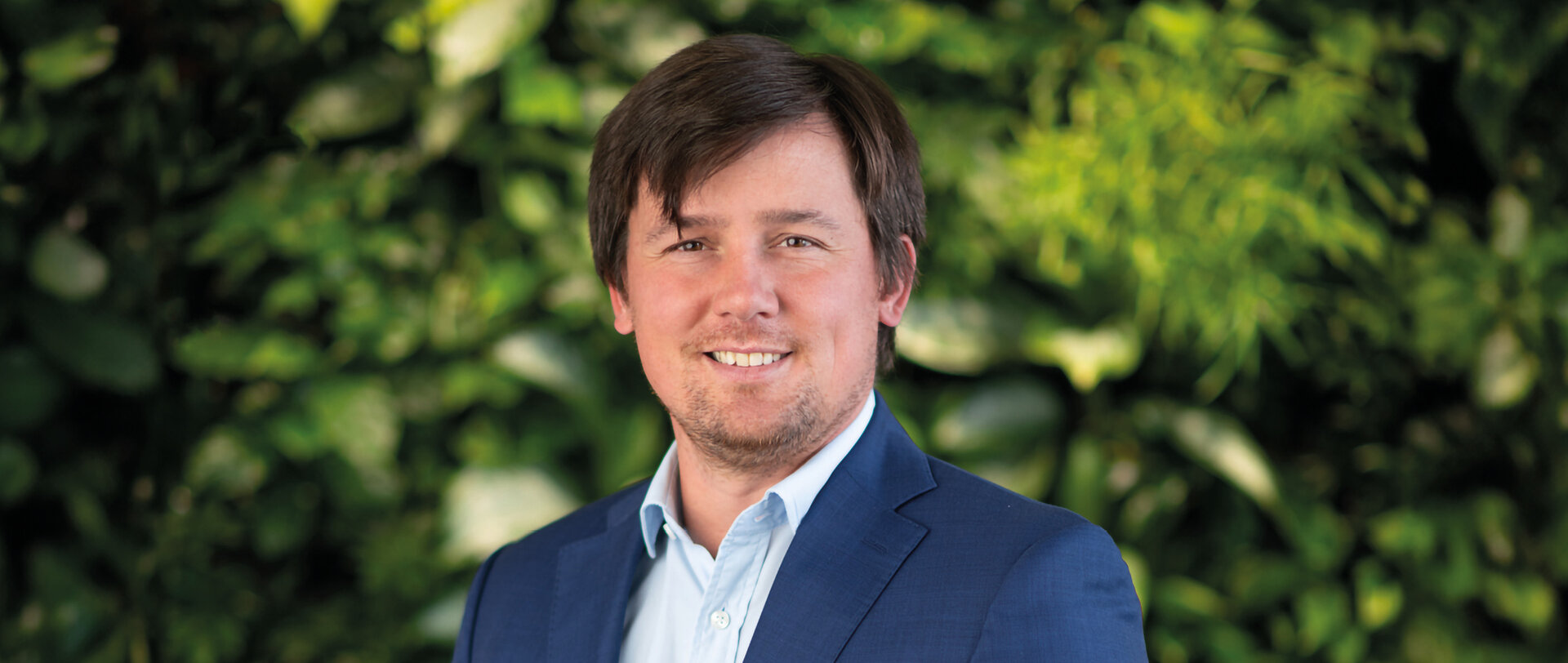Scandinavian Strategic Investor in the FMCG Industry, Orkla, Expands into CEE
Orkla is a strategic investor in the Fast-moving Consumer Goods (FMCG) industry. Josef Suber, / CFO and Head of M&A at Orkla Food International, talks to IMAP about the group's expansion strategy into CEE, acquisition strategy in the Food industry and why it's crucial to have realistic expectations when entering an M&A process.



NÁNDOR TÓTH Associate Concorde MB Partners – IMAP Hungary nandor.toth@imap.com
KÁLMÁN NAGY Managing Partner Concorde MB Partners – IMAP Hungary kalman.nagy@imap.com
Could you tell us a little about Orkla?
Orkla is an industrial holding listed on the Oslo Stock Exchange. We have one large shareholder representing the family office of Stein Erik Hagen and a couple of institutional investors including pension and investment funds. We invest in the FMCG industry through our 12 portfolio companies. While we are predominantly a Scandinavian player, we are also expanding into Central and Eastern Europe and have an overseas operation in India.
What is your professional background and current role at Orkla?
I began my career as an associate at IMAP REDBAENK IMAP Czech Republic back in 2007 where I was interviewed by one of the partners, Richard Kovar which feels like it was only yesterday. I was there for five years gaining lots of transaction experience, and later joined FMCG company, Rieber & Son. The company was acquired by Orka just two months later, so I have essentially been involved in Orkla's business development since 2013.
Orka Foods International, which is part of Orkla Foods, is the group's largest portfolio company, accounting for almost half of the group's enterprise. As its CFO and Head of M&A, my core responsibility is to drive deals and focus on our expansion into the CEE region.
How does M&A fit into the group’s strategy? And what are you looking for in a potential target?
Due to the very different characteristics of the various business areas at Orkla, there is no group-level M&A strategy as such, but I can share with you our strategy in the Food industry. We are primarily looking for strong local brands with leading positions in the food producer and distributor markets, targeting the Retail and HoReCa segments, where we typically focus on frozen, chilled, ready-made meal, canned, sauce, and taste enhancer products. On occasion, we may also consider targets with commodity-type products (for example bakery or diary) but only if they are specialized in niche products or represent a strong brand on the market.
At the same time, we are also looking for portfolio and add-on investments. When entering new markets, we obviously need sizeable targets to provide sufficient scale for launching a portfolio company, so the investment sweet spot is at least €50-70 million with no upper limit. Later, if we do add-on acquisitions to obtain value-added products and capabilities, we may even consider transactions below €10 million.
As for new markets, we have been actively monitoring opportunities across Southeast Europe and have already participated in bidding processes in Croatia and Serbia.
As our experience and added value is limited in this area, we tend not to look for private label producers.
Can you tell us about some of the transactions closed at Orkla? Do you have a favorite war story?
I have personally closed nine transactions during my time at Orkla and have worked on approximately 50 transactions to date – we generally experience a roughly 20% success rate. All but one of the transactions was in the Food industry, which is the group’s most active area in terms of M&A activity.
I do have a couple of war stories, where on a few occasions we bought quite expensive assets which didn’t quite fulfil our initial expectations, but I think these were probably down to our initial assumptions being a little off the mark. On the other hand, our Hame acquisition in the Czech Republic and Eastern deal in India are examples of enormously successful transformation stories, which have become notable milestones in Orkla’s expansion.
What is your experience in terms of cultural differences influencing transaction dynamics in different geographies?
Part of my career at Orkla was initially spent in India where we acquired a large Indian producer where without a doubt, there was a significant cultural difference. However, I believe there are cultural differences everywhere, even if we look at Scandinavia, the Czech Republic, or Hungary, so the key lesson I have learnt, is that we just need to work with the basic principles to succeed. Namely, we need to set up the right pricing at the beginning, so as not to be super hard at the negotiation table. For us it is crucial to play fair and square, be practical, and make the right compromises to complete the deal. My experience is that 5% of the work is done before closing with the remaining 95% coming afterwards to create the envisaged value, so we must be efficient and avoid making things more complicated.

Josef Suber, CEO and Head of M&A, Orkla Food International.
In many cases, acquisitions fail to create the value that buyers envisage in the heat of the transaction process. What is your experience? How do you deliver and measure post-merger success?
I agree. Our experience is that at least 60% of the transactions do not fulfil expectations. Out of 10 deals, I would say that one typically becomes a fantastic investment with significant upside, around three meet or slightly exceed expectations, while on the lower end there are generally two investments which significantly underperform. Nevertheless, we have never lost the nominal value of our investment because there are always valuable assets behind the operation which could secure sufficient value in a worst-case scenario.
Of course, a lower single-digit return is not a particularly great outcome
Perhaps one of the most complicated parts of the process, is the integration. In a highly synergistic case, quick integration is crucial for success, but we aim to remain practical trying to integrate only the necessary, compulsory parts of the business, including supply chain, finance, compliance, quality assurance, and EHS, to ensure we are in alignment with the internal and external rules of the group. In growth cases, we focus on incentivizing the management to stay on board and deliver the growth. Every transaction is different, so while we obviously have a playbook. we do need to be pragmatic.
You have worked on both buy- and sell-side transactions and have been responsible for post-merger integrations, as well as daily operations. What would you say are the different skills required for each?
First and foremost, I believe the responsibility on buy-sides to deliver results, assign the competent management and manage the various stakeholders is much greater. Another key difference is that substantially more time is spent on internal project management on buy-sides. During a transaction, around 80% of my time is spent on internal manoeuvring which is essential to getting the deal done and has a stronger emphasis on buy- rather than sell-side transactions based on my experience. Managing 15-20 people with different perspectives, motives, risk appetite, and emotions requires developing strong interpersonal and social skills. In fact, most of the time it is more challenging aligning the internal stakeholders than negotiating the deal with the counterparty.
How do you think sell-side advisors can create the most value for their clients?
In my opinion, building and maintaining trust by playing fair and being reasonable is crucial. Advisors working professionally, knowledgeable on industry norms, and not trying to be overly smart, managing the client’s expectations and providing consistency throughout the process can significantly help sellers successfully close on a transaction. Frequent, significant, and unjustified changes during the deal can erode the trust between the parties.
As the importance of sustainability, health awareness, functional foods, and alternative diets increases, we are always on the lookout for acquisition opportunities in these subsegments.
What current trends are you seeing in the Food & Beverage industry?
I believe one of the key trends that is important to us is the emergence of private label products, which is a considerable threat to our business building on strong brands.
Other trends include the increasing importance of sustainability, health awareness, functional foods, and alternative diets such as flexitarianism. Orkla is one of the largest players in these subsegments in Scandinavia, so we are always on the lookout for acquisition opportunities, which unfortunately tend to be expensive deals due to the rising attention these phenomena are receiving.
Finally, from your vast portfolio, what would you say is your favourite Orkla product?
If I had to choose, it would have to be Smash the Scandinavian chocolate covered corn snack, which is salty, crispy, and sweet, from our confectionery and snacks segment. Another on my favourites is our Felix Hot Ketchup, from our flagship Austrian brand in the food segment.